GALLERY
Here is a collection of some very special features of the natural world.
Some of them are well-known – others may be new to you. All of them show every evidence of having been designed. All of them defy the efforts to explain them by the chance, unintelligent process of evolution.
All of them pose the important question: is there a supreme designer and creator?
Are we ourselves the product of His great work of creation?
SCROLL DOWN for a brief introduction to each section
The accidental gearwheel


Over the years, the watch has often come to represent what we mean by design: the clear sense of purpose, the cordination of a number of seperate parts working together, precision and accuracy and so on.
In a famous book written in 1802, William Paley put forward a number of examples from the natural world that seemed to him to show exactly these same features that we associate with design. This suggested to him that there was an all-powerful designer at work in the natural world. Many have dismissed his argument, but it refuses to go away.
What Paley could never have anticipated was the discovery that nature too has its watch-like cogwheels. In 2013 scientists investigating a small beetle called a planthopper discovered that the movement of its back legs was synchronised by a pair of perfectly formed gearwheels!


So, big question: could the process described as evolution ever produce such a precision formed mechanism, or is some other agency at work?
The accidental brain
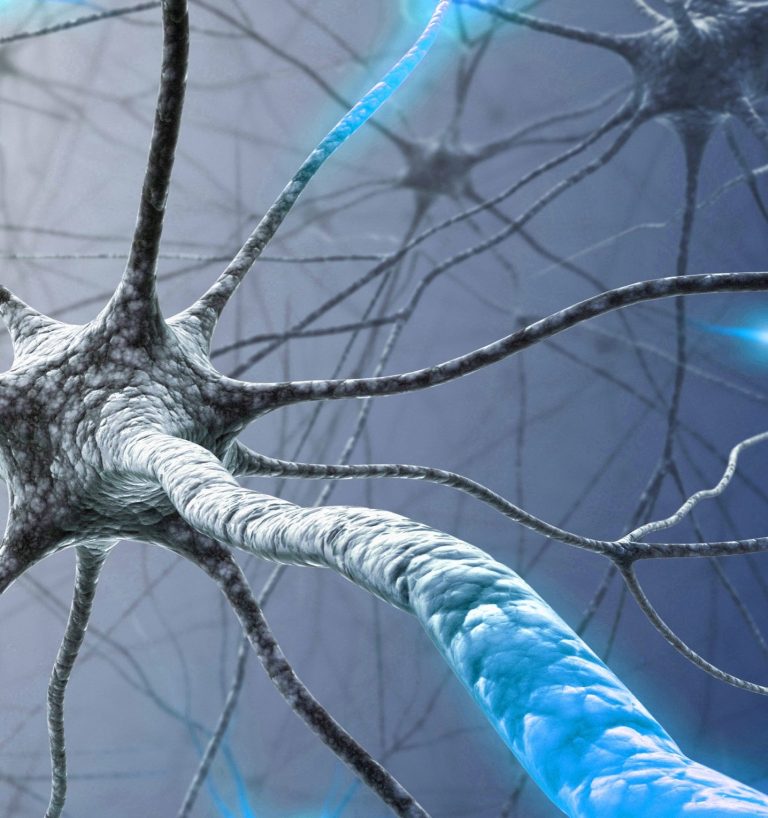
The most complex piece of matter in the whole universe – that is how the brain has been described. Not surprisingly there is still a lot we do not know about it. What we do know is that a single brain rivals the whole of the world wide web in its complexity and interconnectivity.
Our modern experience with computers has taught us the skills needed to design and construct them and the demands of the operating systems required to control them. Most people understand that the brain is largely composed of a huge collection of neurones, a highly specialised cell that behaves very much like a micro computer – taking in signals, treating them, rerouting them and sending them on to a precise location in an inconceivably vast network.
Is it really believable that such an astonishing 'supercomputer' eventually emerged by accident out of the chaos of the 'Big Bang?' More worrying perhaps, if it is just an accident, why should we rely on its conclusions on just about anything?
ktsdesign/shutterstoc



The pride of the peacock

The peacock gave Charles Darwin a headache. Its flamboyant and spectacular display didn't quite seem to fit his 'survival of the fittest' scenario.
There are no pigments involved – the irridescent colours are the result of the physics of light itself. The different colours of the spectrum result from the diffraction of white light through the microscopically thin layers that coat the bird's feathers. This same technology appears in many other creatures unrelated to the peacock, in butterflies and elsewhere.



And as for the geometrical precision and symmetry of the displayed pattern, where did that come from?
Darwin was right to be worried.
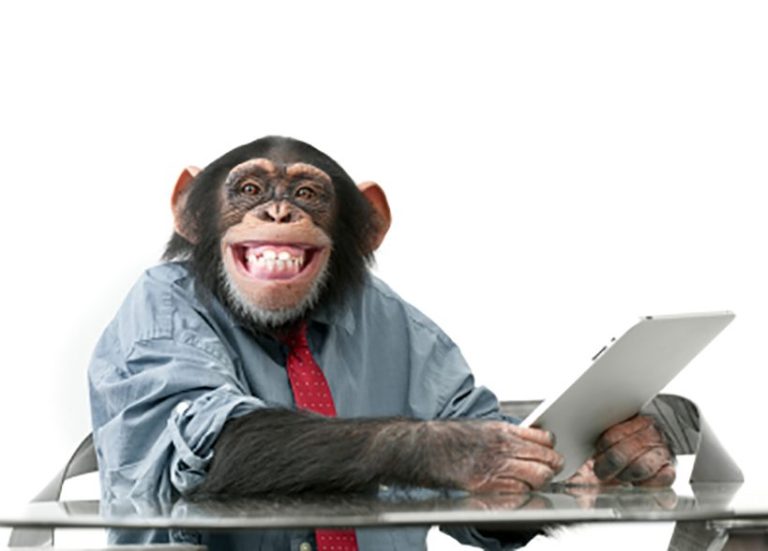
That old monkey business
You have probably heard the story:
If you have lots of monkeys, all typing away on typewriters (or ipads), given long enough they will produce the complete Works of Shakespeare entirely by accident. It may be a comforting thought if you're worried about how some of the very complicated things in nature might appear by chance.
But it is also wrong – completely, utterly wrong.
Test the maths for yourself.
Your junk appendix
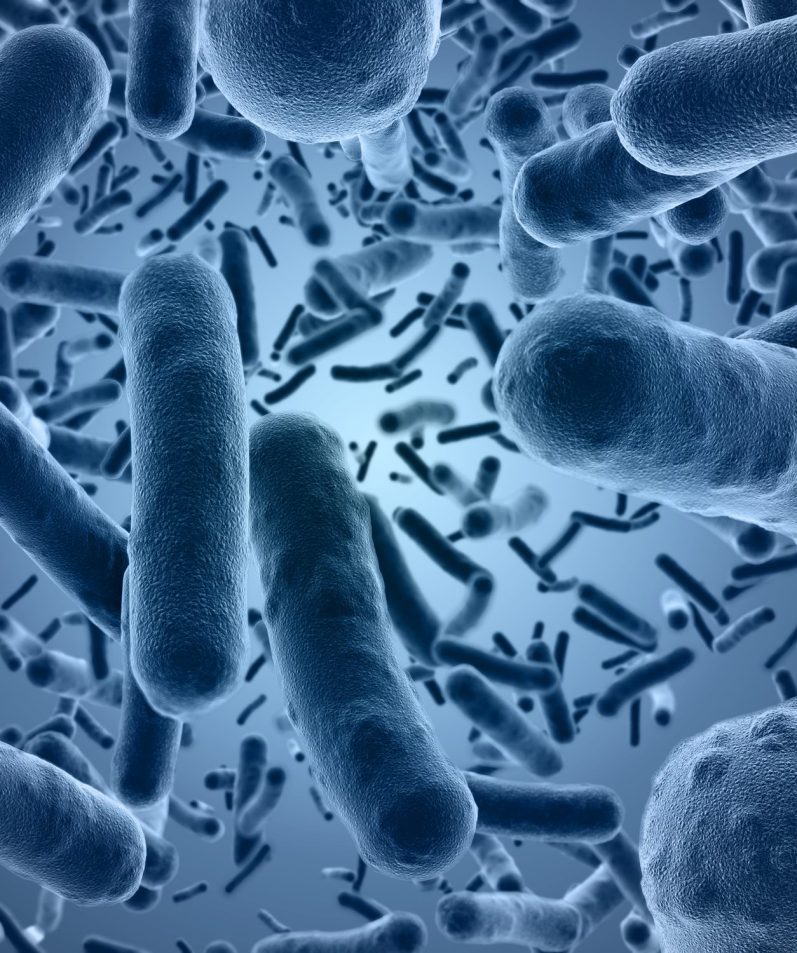
You are not alone.
Your travelling companions as you journey through life are forty million microbes, some on the skin, but most inside, particularly in your digestive tract.
Most of them are ‘good’, beneficial bacteria which are in fact essential for life. But something less than 1% are bad and can make you very ill. When one of these gets out of control (like streptococcus or clostridium), the body has a strong and effective response. The intestines are flooded with water and the contents flushed out in what we experience as an unpleasant bout of diarrhoea. This is highly effective but also quite drastic – the ‘good’ bacteria are flushed away as well as the bad.
This is when your much maligned appendix comes into its own.
The Goldilocks planet
“Who’s been sleeping in my bed?”
The story of Goldilocks and the three bears is one that many will remember from early childhood – the story of the golden-haired little girl who discovers and then explores the home of three bears in the forest.
But how did our earth become known as the Goldilocks Planet? How is it that such an utterly improbable fairystory should come to feature in the scientific debate of the 21st Century?
Good question!
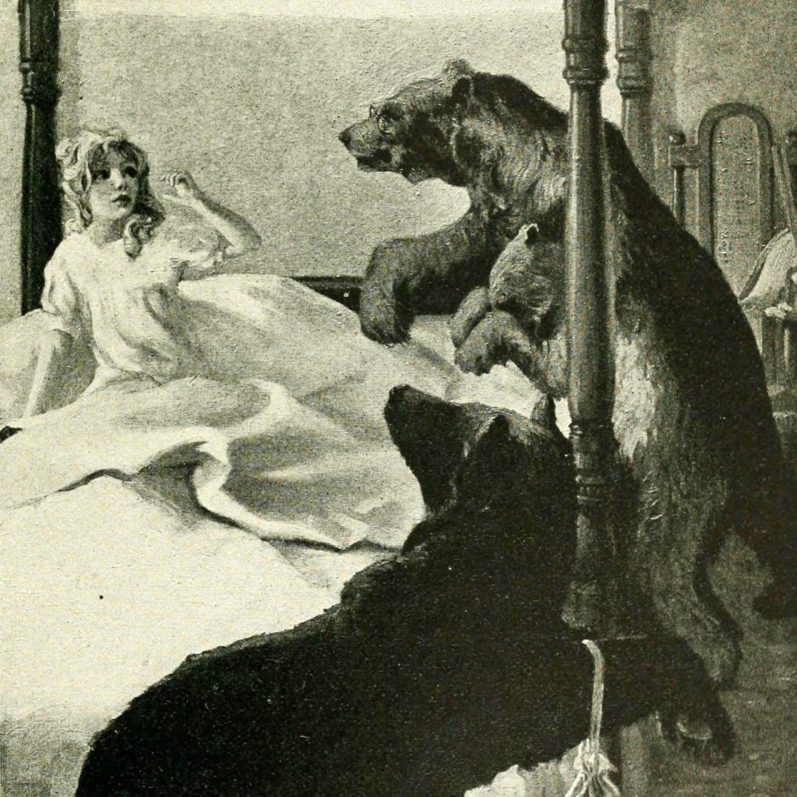
A long way to swallow

For many people the giraffe seems to epitomise the story of evolution – an animal that survived only because it evolved an extra long neck so it could browse the leaves of the highest trees.
What could be simpler?
It turns out the story is not quite as simple as it seems. One of the foremost evolutionists of our times has dismissed it as a fairy tale. He says it is indefensible, 'entirely speculative', 'weak and foolish' and 'basically rather silly' (Stephen J Gould). Others are looking for alternative explanations for the distinctive features of this amazing animal.
So what's the problem? Let's look a bit closer.
Pablo Vivaracho Hernandez/ istock
Take a deep breath

‘And the Lord God formed man of the dust of the ground, and breathed into his nostrils the breath of life: and man became a living being.‘ Genesis 2.7
This account of creation from the book of Genesis could hardly be more different to the currently accepted narrative of evolution. Today we are told that when we breathe, the apparatus we use is simply the result of several billion years of unguided accidental change.
Can the evolutionary story explain the mechanism of breathing that Genesis describes here, and which we now know so much about?
PonyWang/ istock
You are exceptional

The apes are our nearest relatives, according to popular evolutionary mythology.
The Genesis creation story is very different. Humans are a special creation, with special characteristics and abilities that reflect those of the Creator.
Which story stands up to examination?
Does our behaviour as human beings reflect our origins?
Can we aspire to anything better?
cheekylorns/ istock
Gravity and fine -tuning
anton burakov/ shutterstock


The story is well known, and Isaac Newton himself seems to have confirmed the main part of it. He was in the orchard of his home at Woolsthorpe Manor in Lincolnshire, England, when the fall of an apple from one of the trees set him thinking. The apple probably didn’t fall on his head, neither was he asleep under the tree at the time – in fact he was obviously very much awake!
Over the next 20 years he developed and refined his theory of gravity until it was published in 1687. It has stood the test of time.
But one remarkable thing has since come to light. The exact strength of the force of gravity is absolutely critical to the existence of the universe and our place in it.
And it is not the only force that has to be exactly right in this way....
Darwin and the whale
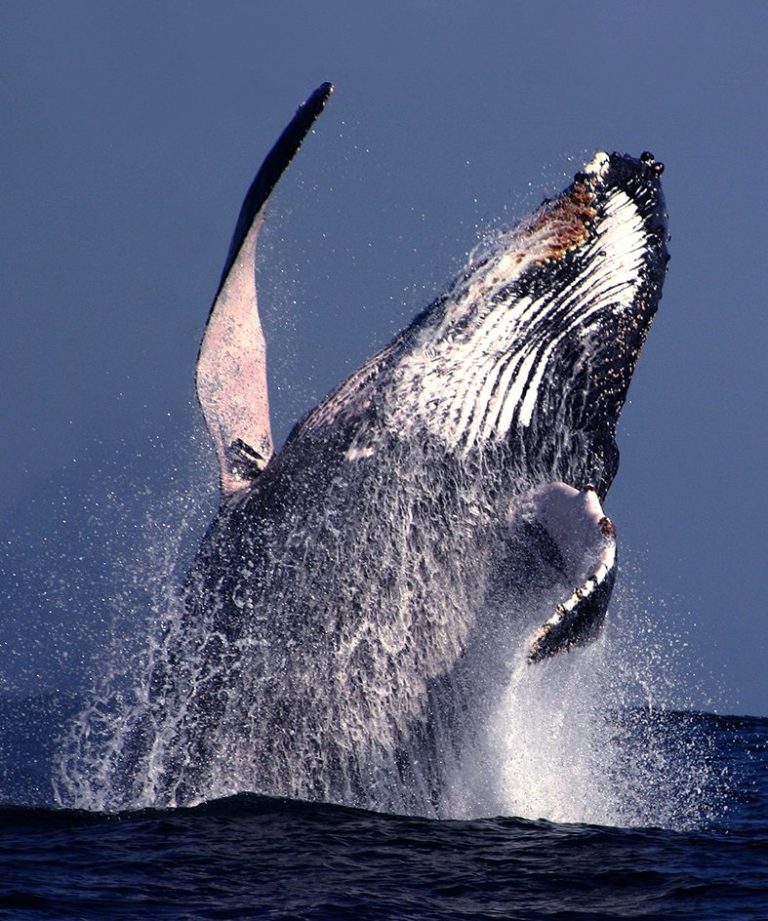
A great blue whale throws its nearly 200 tons out of the sea, in what looks like a celebration of pure power and joy!
Darwin suggested the whale was originally a small land animal like a bear, which evolved as a mammal on land, and then migrated into the sea.
Some transformation!
Does the story stand up to examination?
BrettAtkins/istock
Ladybird, ladybird...
English Nursery Rhyme

Protasov AN/ shutterstock
As somebody who grew up soon after the war years in England, I was very familiar with the logo of Ladybird books, a wide range of small hardback books for children.
But when you watched the actual insect, you became aware that its bright red body concealed two large wings that seemed far too large to fit inside. What was the secret?
In 2017 some Japanese scientists set to work to find out what was going on. As a result they found an astonishing piece of design which they called 'origami', after the Japanese art of paper-folding.

The case for the Creator

This famous ‘Time’ magazine headline in April 1966 captured the spirit of the times, and its scepticism still prevails. God does not feature in the lives of most people today.
But times are changing.
Since the turn of the century an important series of publications have challenged the prevailing view, among them ‘Return of the God Hypothesis’ by Stephen Meyer (2021) and most recently ‘Is Atheism dead’ by Eric Metaxas, (2021). They expand on some of the arguments for the existence of God, all of them springing from scientific and historical developments over the last century or so. The claim that ‘science’ has dispensed with the need for a Creator does not stand up to investigation.
Here in the briefest of summaries are seven arguments that demand an intelligent, almighty designer and originator.
Time.com
The perfect copy

Our ability to copy just about anything with the press of a button is an astonishing feature of modern technology. It's now so routine that we take it for granted, but it is revolutionary – the armies of scribes, copyists, monks, typists and duplicators all consigned to history.
Something else we take for granted are the incredible copying techniques used in the human cell to support our existence from moment to moment. This amazing technology, far superior to anything we have produced, is supposed to be an accident of 'nature'.
What do you think?
A cascade of hormones
A single human cell divides into two.
The two become four, the four become eight until forty weeks and 26 billion cells later, a new human being is ready to be born. This amazing transformation is overseen by a series of powerful proteins called hormones.
A hormone is described as a 'chemical messenger', a vital part of the body's control and information systems. There are known to be more than 50 of them, and they travel throughout the body to control growth and development, metabolism, sexual function, reproduction and mood.
They are powerful – small amounts cause important changes. They enter the bloodstream directly from eight major endocrine glands scattered through the body, and each has a feedback system which makes sure the amount of each hormone is not too much or too little.
The big question we need to answer is this –
is Darwin's mechanism of undirected variation and 'natural selection' capable of producing such a complex and vital control system?
It's important : no hormones, no baby, no human race.

In kings' palaces
"The spider... is in King's palaces"
said king Solomon (Proverbs 30.28 KJV), no doubt drawing on his own experience!
Today we recognise some 34,000 different species of spiders, flourishing in nooks and crannies across the globe. Their distinctive feature is their web, an intricate structure made of fine strands of silk, and taking numberless different forms: spiral orb webs, tangle webs, funnel webs, tubular webs, trapdoor webs and so on. The web is the spider's home and its trap for prey, other airborn insects which get tangled in its strands.
The web is the product of a remarkable system in which the spider itself produces the raw material ('spider silk') and then deploys it with an astonishing degree of engineering skill. The material (protein) is produced by glands in the spider's abdomen, and spun into silk strands by a number of spinnerets which produce a number of different 'grades' of silk. These are used for different purposes by the 'host'spider in constructing its web and in other tasks
This system is a classic example of what we mean by 'design', a number of different elements all working together to acheive a common purpose, united by a predefined goal. Could an evolutionary system, based on random variation and without a target, acheive the same result?

Notice the geometry and absolute precision of the web construction. The spider is drawing the silk from one of its spinnerets just before attaching it to a radial strand of the web.
Ian Fletcher/ shutterstock
The cell
A model of a single living cell, cutaway to show the interior
There are many organisms that have just one cell, (eg bacteria, amoeba, fungi etc). Most of them are very small.
You are different. A human being is made up of many cells –
37 trillion or thereabouts
All of your trillions of cells have one thing in common (with a few exceptions): your DNA 'footprint' or 'genome', your unique genetic 'signature', is stored in the nucleus at the centre of the cell seen here.
The strands of DNA are tightly packed together, and if straightened out would be about 2 metres long for each cell. With trillions of cells, the total length of DNA in your body is around twice the width of our solar system. You may like to read that again.
So you are information – without information, you, and the entire living world, are nothing. This is not theoretical, the latest way-out science theory, here today, gone tomorrow. This is coded data that can be seen, touched, decoded, interrogated and edited. It's the key to our existence. It challenges atheistic science to explain where it came from, because the only source of information that we know of is an intelligent mind.

The cell
The Navigators
7,189 miles non-stop!
Can you believe it?
Surely it's impossible for anything to go that far without a break, let alone a small bird?
However unlikely it may seem, it is well documented that a bird called the bar-tailed godwit covered this distance on its migration from Alaska to New Zealand and back.
The bird, fitted with a satellite tracking device, was recorded flying non-stop for 6,350 miles from New Zealand to China.Then, after feeding for five well-deserved weeks, it flew another 4,013 miles to the Alaskan Peninsular. The same bird flew the return leg to New Zealand, covering 7,189 miles non-stop in 8 days.
That is an average speed of about 35 m.p.h. for nearly 200 hours!
The godwit may hold the record for non-stop flight, but it is not the only bird to cover such huge distances. The Arctic Tern completes the longest migration of any animal, from near the North Pole in the Arctic to spend the summer in the Antarctic – a round trip of 25 – 30,000 miles. The oldest known tern (42 years old) may have clocked up over one million miles in its lifetime.


But one of the most extraordinary migrations known to us is that of a much smaller animal, the monarch butterfly: amazing because it bridges several years and several successive generations.
The route is the 2 – 3,000 miles between Canada and Mexico. The journey may take three or four generations, with the latest offspring returning to the very same tree occupied by their ancestors!

All these astonishing journeys pose an important question:
how do they know where they are going?
Seeing is Believing
The eye is amazing, said Charles Darwin.
This is what he said:
"To suppose that the eye with all its... contrivances for adjusting the focus to different distances, for admitting different amounts of light, and for the correction of spherical and chromatic aberration, could have been formed by natural selection, seems I freely confess, absurd in the highest degree."
'On the Origin of Species' 1859
Sadly, his modern-day disciples don't share his admiration.
In fact quite the reverse; the human eye has become a text-book example of supposedly poor design!
In 1986 Richard Dawkins dismissed the design: "...it is the principle of the thing that would offend any tidy-minded engineer!" There followed a gaggle of other evolutionary 'experts' saying the same thing.
George Williams, for example: "There would be no blind spot if the vertebrate eye were really intelligently designed. In fact it is stupidly designed." In 2005 biologist Douglas Futuyama claimed "no intelligent engineer would be expected to design" the "functionally nonsensical arrangement" of nerve cells in the human retina.

It is obvious what is going on here.
A group of scientists, committed to an atheist and materialist view of the world, are challenging the faith of those who believe in a Creator and Intelligent Designer. They claim the eye, far fom being an icon of superb design, shows clear evidence of its evolutionary origin and a lack of intelligence in its creation.
In fact, they say, it contains a quite elementary childish mistake!
Do they know what they are talking about?

Shutterstock
Let's take up the challenge!
On your knees
"Ironically, the knees have felt OK. They've been very solid".
So said British runner William Goodge on Bondi Beach, Australia, on 19 May this year.
He had just broken the record for running 3,800 km across the continent, from Cottesloe Beach on the western coast to Bondi in the east, in 35 days – more than 100 km or the equivalent of 2 1/2 marathons each day.
Just when you thought he would be 'on his knees', he said his knees were perfectly OK – it was his feet he was worried about!
The amount of work his knees went through in that time is difficult to believe. The experts seem to agree that each stride a runner takes exerts a force on the ground of about four times his body weight. So for a 75 kg athlete, each heel strike exerts a force of 300 kg.. Over the course of a single kilometre (say 1000 strides) that adds up to over 300 (metric) tons of pressure. Goodge emphasises that he runs very slowly, which tends to increase these load figures due to the shorter stride at slow speeds.
So it's not surprising that the knee joint needs to be the largest and strongest in the human body, and is joined to the strongest bone in the body, the thigh bone or femur.
There's nothing simple about the knee. Is a creator/designer at work, or has evolution produced another miracle of unintelligent 'design' ?


We do not use cookies on this website. We do not collect any of your personal details, and our list of subscribers is not shared with any third party.
Intelligence and purpose in the natural world
We need your consent to load the translations
We use a third-party service to translate the website content that may collect data about your activity. Please review the details in the privacy policy and accept the service to view the translations.
